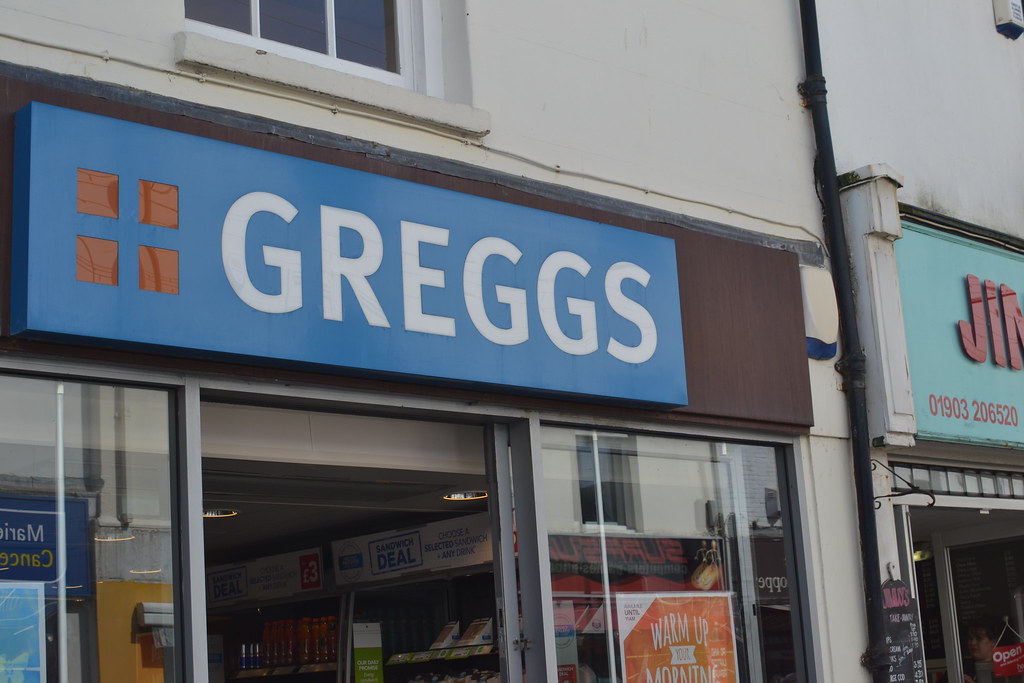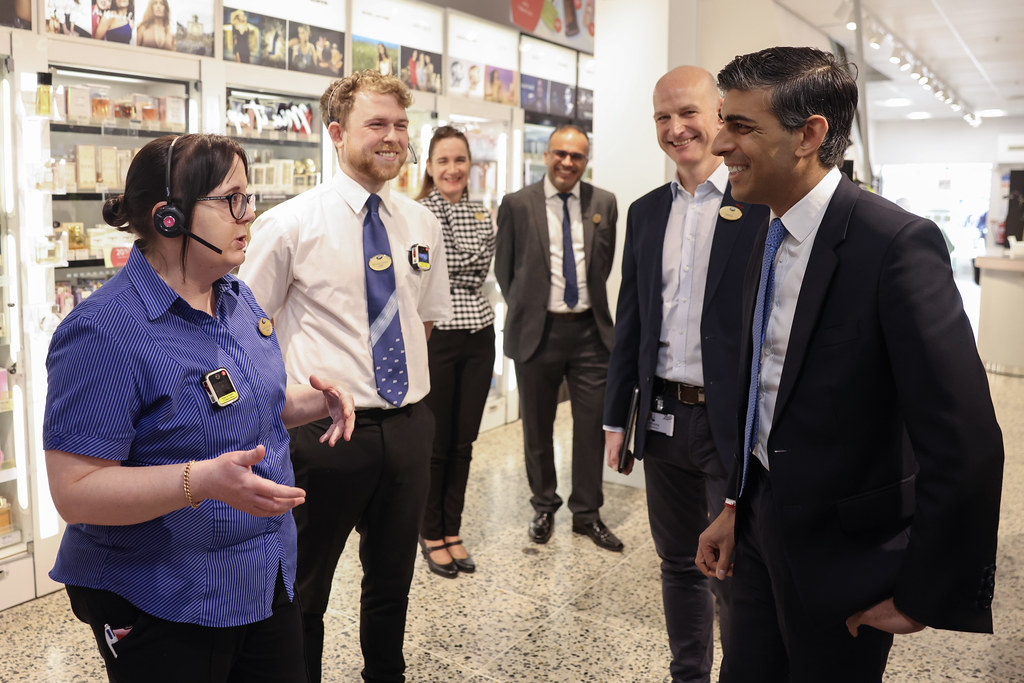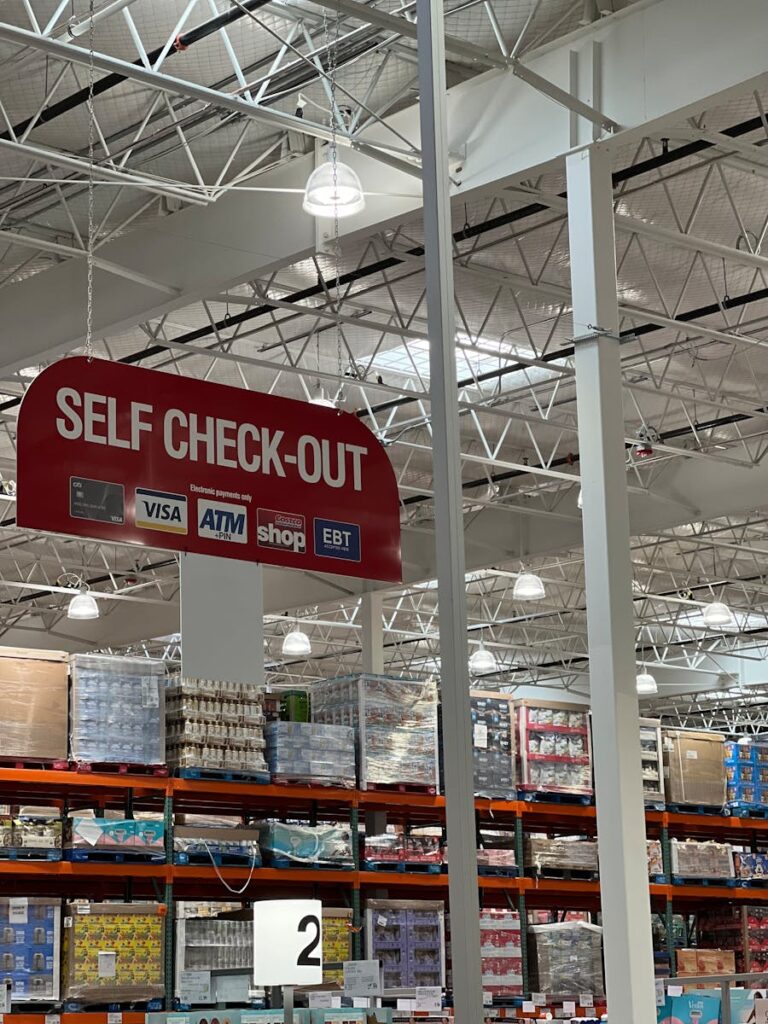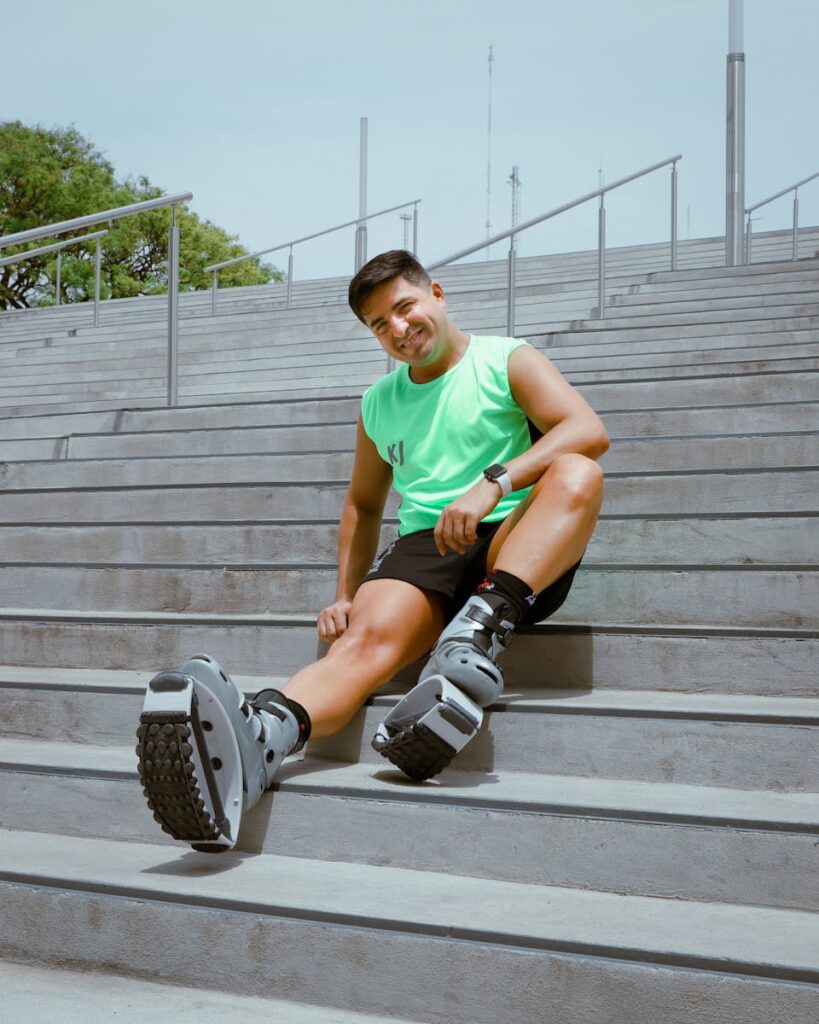
Across the retail landscape, a palpable tension is mounting between safeguarding merchandise and preserving a seamless shopping experience for customers. Major chains, grappling with what they report as a significant surge in theft and anti-social behavior, are implementing strategies that are transforming how consumers interact with products on shelves and check out their purchases.
From locking up everyday items like toothpaste and deodorant to rethinking the role of self-checkout stations, businesses are making difficult choices. While these measures are designed to curb losses, they often introduce friction into the customer journey, leading to frustration and even driving some shoppers online. It’s a delicate balancing act with significant financial and experiential implications.
Greggs, the popular bakery chain, has moved sandwiches and drinks behind counters in some stores, ditching the usual self-service fridges. This trial, implemented in at least five locations, is a direct response to higher levels of anti-social behavior and a spate of thefts. The company states it’s one of several initiatives being tested where stores are exposed to increased crime.

Retail Anti-Theft Strategies Upgrade: From Locked Displays to Self-Checkout Control
A Greggs spokeswoman confirmed these trials, emphasizing, “Customers can expect to see our full range of great value and tasty Greggs favourites available from behind the counter.” The company underscores that “The safety of our colleagues and customers remains our number one priority.” Earlier initiatives trialled by Greggs include high-security doors, panic alarms, and even a system to instantly share shoplifter images with police, alongside body-worn cameras for staff in some stores.
Walgreens is another prominent example of a retailer openly discussing the impact of increased theft. The company has resorted to locking up more products, acknowledging that “When you lock things up, for example, you don’t sell as many of them.” Despite this proven negative impact on sales, Walgreens CEO Tim Wentworth indicated the company plans to continue the practice, describing the situation as “a hand-to-hand combat battle still” to stop theft.
Retailers are willing to accept the lower sales that result from locked displays because losing products to shoplifters hits profits even harder. It’s also often cheaper than deploying significantly more staff or expensive security systems across every aisle. A Walgreens spokesperson called locked display cases the “most efficient solution to combat retail theft,” while confirming they “continuously review the impact of these actions on sales” and test alternative strategies.
Yet, analysts and customers alike question the long-term viability of this approach. Analyst Scott Mushkin of R5 Capital calls it “a blunt tool and self-defeating,” asking, “Why go to a store if you have to wait for someone to open up the case?” The inconvenience can push shoppers towards online retailers like Amazon, as Amazon CEO Andy Jassy noted, describing the in-store experience with locked products as “tough.”
The Hidden Cost of Shopping Experience: Frictions Caused by Anti-Theft Measures
The pandemic saw a surge in the adoption of self-checkout lanes as customers sought minimal contact. However, these kiosks have also become a significant point of vulnerability for retailers. Industry figures, research, and retailer reports point to higher rates of theft, or “shrink,” associated with self-service options.
A November 2023 LendingTree survey revealed that 15% of self-checkout users have purposely stolen an item, with 44% of those admitting they plan to do it again. A 2022 report found two-thirds (66%) of surveyed retailers believed self-checkout losses were becoming more of a problem. The National Retail Federation’s December 2024 report highlighted a 93% increase in the average number of shoplifting incidents per year in 2023 compared to 2019.
In response, many retailers are recalibrating their approach to self-checkouts, not necessarily eliminating them, but using them more strategically. Target, for instance, limited its self-checkout use to customers with 10 items or less back in March 2024. While a Target spokesperson stated this change was about improving transaction times and customer experience, industry experts largely attribute the shift to reducing theft and losses from genuine customer errors, as analyst Neil Saunders noted.
Target reports positive outcomes from this policy change, including an 8% improvement in total transaction times and a 5-point increase in their Net Promoter Score for checkout wait times. Despite this, the move has sparked considerable frustration among shoppers on social media, complaining about longer lines at manned checkouts and inconsistent enforcement of the item limit at self-checkout lanes.
Product on Amazon: ZFD Retail Anti-Theft System Equipment Sensor Kit 8.2Mhz Clothing Security Tag Checkers Checkpoint Compatible(Ship from US)
Brand: ZFD
Binding: Product Group: Camera
Price: 429 USD
Features:
1. Comprehensive Kit: Includes 2 powerful antennas, 100 durable security tags, 1 adapter ,4 anchor,1 connection cable and a magnet tool, providing a complete retail anti-theft equipment solution for clothing and accessory protection.
2. Adjustable Sound & Light Alarm: Features a adjustable sound and light alarm system to effectively deter shoplifting. Easy to install with provided wiring diagrams.
3. Advanced EAS Technology: Utilizes RF 8.2MHz technology, ensuring reliable detection of security tags and preventing unauthorized removal of goods from your store.
4. Easy Installation & Maintenance: Designed for quick setup with minimal tools required. Includes a user-friendly manual for seamless integration into your retail environment.Message us if you have process during use or you want to more antenna connected,we are glad to help you
5. Versatile Protection: Perfect for supermarkets, clothing stores, and various retail settings. Protects a wide range of products with effective anti-shoplifting measures
Shopping on Amazon >>

Technological Breakthrough and Industry Game: AI Surveillance and Anti-Theft Balance
Other retailers are making even more significant changes. Dollar General announced in March 2024 it was converting some self-checkout registers to associate-assisted stations in 9,000 stores. It’s also limiting self-checkout to five items or less in some locations and completely removing them from its 300 stores with the highest theft rates, a strategy its CEO believes aligns with customer preference for increased personal engagement and can positively impact shrink.
Five Below is also phasing out self-checkout significantly, moving to shopper-assisted checkout at all stores where a cashier finishes the transaction after the customer scans items. Walmart has removed self-checkout machines in select locations, including Shrewbury, Missouri, and Cleveland, with a spokesperson confirming such removals are based on factors including customer/associate feedback and business needs, though stating there are “no current plans for self-checkout removals nationwide.”
Sam’s Club utilizes a Scan & Go system via its app, allowing shoppers to scan items as they shop and pay without traditional checkout lines. This is complemented by AI-powered exit technology to verify items as members leave. While not directly addressing self-checkouts, a Sam’s Club spokesperson highlighted testing and learning solutions to meet member needs, providing “flexibility and options for how members choose to pay.”
Product on Amazon: Little Tikes First Self-Checkout Stand Realistic Cash Register Pretend Play Toy for Kids
Brand: Little Tikes
Binding: Toy Product Group: Toy
Price: 30.99 USD
Features:
1. First Self Checkout Stand
2. Item Package Dimension: 16.75L x 10.5W x 8.25H inches
3. Item Package Weight – 4.4 Pounds
4. Item Package Quantity – 1
5. Product Type – TOYS AND GAMES
Shopping on Amazon >>
Read more about: Thousands of Stores Closing Across the US in 2025: Here’s the List of Major Retailers Impacted

The changing nature of retail crime is also a critical factor. While organized gangs stealing to order remain a significant concern, contributing to the British Retail Consortium’s reported £2.2bn annual cost of retail theft, security experts are also noting a shift in perpetrator demographics.
John Nussbaum, director of service at Kingdom Services Group, a security firm, reports seeing a “massive increase in pensioners shoplifting” over the last year. He attributes this “different level of crime now” to the rising cost of living, pushing people to actions they’ve “never done before,” citing examples like putting a jar of coffee in a bag. He estimates 5% of those caught by his staff are over 50.
Nussbaum, with 30 years in security, notes this is new, stating, “Ten years ago, five years ago, you wouldn’t have seen this kind of theft.” He connects it to “desperation” when people “can’t afford to spend £10, £20 on food.” Retailers often handle such cases without police involvement, perhaps due to negative publicity concerns, he added.
The official figures show a stark increase in shoplifting offenses. The Office for National Statistics recorded 516,971 offenses in England and Wales in 2023, a 20% increase from 2022, marking the highest level on record. However, retailers contend these figures “severely underestimate” the true scale of the problem, pointing to organized crime and increased violence against staff.

Sadly, shoplifting is not a victimless crime. Graham Wynn of the BRC states it “pushes up the cost for honest shoppers and damages the customer experience,” and acts as a “major trigger for violence and abuse against staff.” Nussbaum reports seeing “terrible violence now, every day” from organized gangs, including an employee punched recently and security staff wearing stab-proof vests.
Retailers have invested millions in security, including facial recognition and AI-aided cameras. The government is also addressing the issue through legislation, aiming to remove the £200 threshold for “low-level” theft and introduce a stand-alone offense for assaulting a retail worker, alongside funding promises to tackle organized gangs.
Balancing loss prevention with customer satisfaction remains the core challenge. While self-checkout offers retailers cost savings and potentially faster service during peak times, it also demands labor for supervision and is linked to higher theft. For customers, it offers speed and autonomy, but errors or delays quickly cause frustration. As analyst Santiago Gallino puts it, “Retailers are recalibrating self checkout usage, rather than retreating.”
The current landscape suggests a move towards a more strategic, nuanced deployment of self-checkout and a greater reliance on overt security measures like locked displays, despite their drawbacks. Retailers are learning valuable lessons about the trade-offs between operational efficiency and the customer experience.
Product on Amazon: 500 Security Lanyard Wire Loop to Pin 8 Inch EAS Loss Prevention Black by Bullseye Protection – Clothes Security Tag Lanyard for Anti-Theft, Shoplifting, Loss Prevention Systems
Brand: Bullseye Protection
Binding: Unknown Binding Product Group: BISS
Price: 119.75 USD
Features:
1. Must-Have Accessories: Your anti-theft system would not be complete without these security tag loops that allow you to attach the security tags to virtually any product! Easy to use and practical, these lanyards protect your merchandise against theft.
2. Easy to Use: Our loop wire lock has 8-inches (20cm) and features a loop-to-pin design that makes it easy to install on merchandise that’s more difficult to tag. Simply pass the lanyard to the merchandise and secure it using the designated pin.
3. Wide Range of Uses: The clothing tag wire loops are extremely versatile and can be used with a wide range of merchandise including small accessories, jewelry, sandals, shoes, clothes, bags, scarves and more, without damaging the items.
4. Large Set: These magnetic tag lanyards are available in large packs of 100-pcs, 500-pcs, and 1000-pcs, which you can use with most merchandise. Suitable for small businesses, large shops, retail chains and more.
5. Compatible with Most Tags: Not only are extremely hard to break but these clothing tag lanyards also ensure maximum compatibility with most EAS tags! They are suitable for hard tags, square tags, mini tags, tamper-resistant tags and more.
Shopping on Amazon >>

Read more about: Walmart’s Massive Transformation: Inside the $9 Billion Push for Future Stores, Smarter Tech
The path forward for retail involves more than just locking doors and counting losses; it’s about intelligently integrating technology, staffing, and policy to create environments that deter crime effectively while welcoming and serving honest shoppers. It’s a dynamic puzzle, constantly requiring adaptation as criminal tactics evolve and customer expectations shift, promising an era where the retail store is not just a place to buy goods, but a carefully managed ecosystem balancing access, security, and service in innovative ways.
Related posts:
Newcastle-based Greggs to remove self-service fridges from some stores to curb shoplifting
What’s in store for the future of self checkouts? How retailers are pulling back.
UK food shops report ‘massive’ rise in pensioner shoplifting




